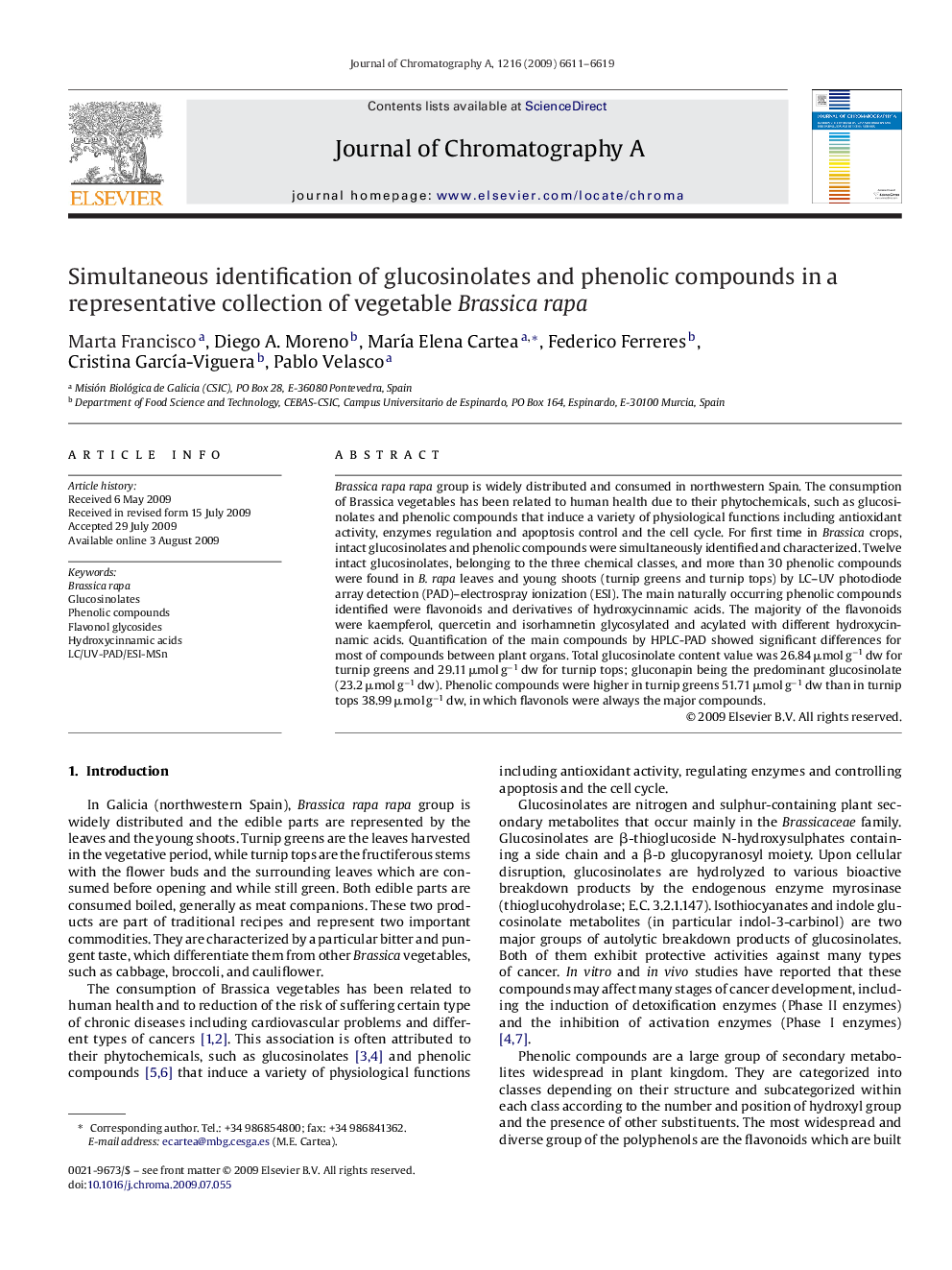| Article ID | Journal | Published Year | Pages | File Type |
|---|---|---|---|---|
| 1210662 | Journal of Chromatography A | 2009 | 9 Pages |
Brassica raparapa group is widely distributed and consumed in northwestern Spain. The consumption of Brassica vegetables has been related to human health due to their phytochemicals, such as glucosinolates and phenolic compounds that induce a variety of physiological functions including antioxidant activity, enzymes regulation and apoptosis control and the cell cycle. For first time in Brassica crops, intact glucosinolates and phenolic compounds were simultaneously identified and characterized. Twelve intact glucosinolates, belonging to the three chemical classes, and more than 30 phenolic compounds were found in B. rapa leaves and young shoots (turnip greens and turnip tops) by LC–UV photodiode array detection (PAD)–electrospray ionization (ESI). The main naturally occurring phenolic compounds identified were flavonoids and derivatives of hydroxycinnamic acids. The majority of the flavonoids were kaempferol, quercetin and isorhamnetin glycosylated and acylated with different hydroxycinnamic acids. Quantification of the main compounds by HPLC-PAD showed significant differences for most of compounds between plant organs. Total glucosinolate content value was 26.84 μmol g−1 dw for turnip greens and 29.11 μmol g−1 dw for turnip tops; gluconapin being the predominant glucosinolate (23.2 μmol g−1 dw). Phenolic compounds were higher in turnip greens 51.71 μmol g−1 dw than in turnip tops 38.99 μmol g−1 dw, in which flavonols were always the major compounds.
